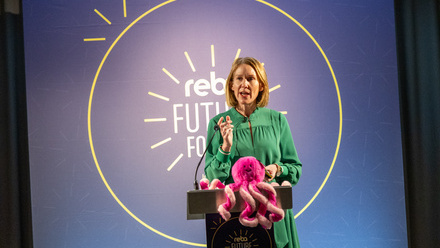Research: closing the gender pay gap

The Fawcett Society calculates Equal Pay Day using Office for National Statistics (ONS) data. This year’s full-time mean average gender pay gap is 11.5%, down from 13.1% in 2019. The mean gender pay gap for all employees, not just those working full-time, is 14.6% this year, down from 16.3% last year.
The narrowing of the gender pay gap is to be welcomed. However, this year’s ONS data comes with a reliability warning due to the difficulties it faced when collecting data during the coronavirus pandemic, and the unclear impact of furlough.
Another crucial missing part of the gender pay gap picture is the information obtained under mandatory reporting requirements, which were suspended earlier this year due to the pandemic.
Yet, regardless of the accuracy of this year’s gender pay gap data, the fact remains that a gap exists.
The latest insight
The Equality Trust has launched a three-year report on the progress of gender pay gap reporting. It found that since mandatory reporting was introduced in 2017 there has been paltry progress on reducing the gender pay gap, while an increase of 179% on the average gender bonus gap was found in reporting companies.
These findings are disappointing, however there is reason to be hopeful. The ONS’ sample data shows a mean pay gap 2-3% higher than the average gender pay gap statistics of individual companies with over 250 employees published on the government website, suggesting that larger organisations are making more progress.
Despite this, the Equality Trust has called for stricter rules to encourage companies to effect change, rather than just report on their figures. It would like to see organisations draw up evidence-based action plans to address their failure to narrow pay gaps.
The Fawcett Society has also been looking at how other countries are aiming to reduce pay disparities in its comparative analysis of gender pay gap legislation across 10 countries research. This insight notes that the UK can be proud of its current world-leading position in terms of transparency and compliance. However, in other regards it still has work to do.
It would like to see the legislation extended to smaller companies – those with 50 employees or more – perhaps with graduated reporting requirements depending on size. While, much like the Equality Trust, it too would like to see a harder line approach to require organisations to provide an action plan to close the gap – currently there is only guidance to do this.
How progress is being made
One of the biggest issues for organisations trying to close the gender pay gap is not having enough women at senior levels. Often this is attributed to a lack of flexibility and to other commitments getting in the way of women going further in their careers.
To try and tackle this issue, an experiment was undertaken by the Behavioural Insights Team in conjunction with Zurich Insurance UK and funded by the Government Equalities Office. Between March 2019 and February this year, Zurich advertised four out of five vacancies with the option of part-time, full-time, job share or flexible working. The results of this trial have been impressive.
Zurich has seen a 16% rise in the number of women applying for jobs and a near 20% jump in female applications for management roles. The number of women hired for senior roles as a direct result of the initiative has leapt by 33%.
Just by simply changing job adverts and being more open to different ways of working the organisation has been able to increase the number of women in senior roles, which should help to narrow the gender pay gap.
Of course, there are lots of other ways of narrowing gender pay gaps, from offering greater flexible working, through to unconscious bias training and equal pay reviews.
Many good employers are already taking the necessary steps to bring greater pay equality to all. So what are you doing in your organisation?
The author is Dawn Lewis, content editor at REBA.






